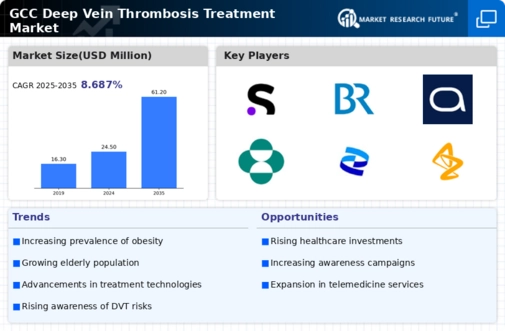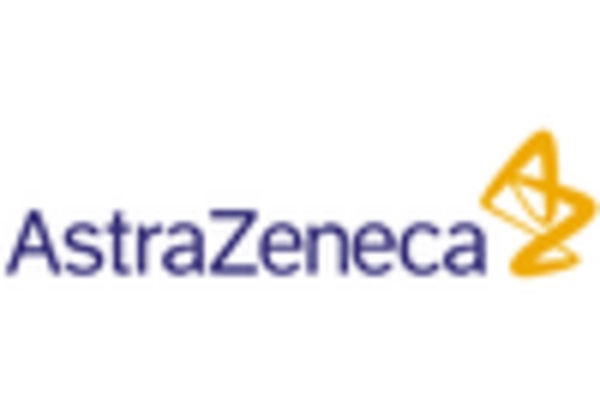Rising Incidence of Risk Factors
The deep vein-thrombosis-treatment market is experiencing growth due to the increasing prevalence of risk factors associated with DVT, such as obesity, sedentary lifestyles, and aging populations. In the GCC region, the rise in obesity rates, which have reached approximately 35% in some countries, contributes significantly to the incidence of DVT. Additionally, the aging demographic, with a notable increase in individuals aged 60 and above, further exacerbates the situation. This demographic shift is likely to drive demand for effective treatment options, as older adults are more susceptible to thrombotic events. Consequently, healthcare providers are focusing on developing targeted therapies and interventions to address these risk factors, thereby enhancing the deep vein-thrombosis-treatment market.
Increased Awareness and Education
There is a growing emphasis on awareness and education regarding deep vein thrombosis, which is positively impacting the treatment market. In the GCC, healthcare organizations are launching campaigns to educate the public about the risks and symptoms of DVT. This increased awareness is crucial, as it encourages individuals to seek medical attention promptly, leading to higher diagnosis rates. As more people become informed about DVT, the demand for treatment options is expected to rise. Furthermore, educational initiatives targeting healthcare professionals are also being implemented, ensuring that they are equipped with the latest knowledge and skills to manage DVT effectively. This trend is likely to bolster the deep vein-thrombosis-treatment market.
Growth of the Pharmaceutical Sector
The pharmaceutical sector's expansion in the GCC is a key driver for the deep vein-thrombosis-treatment market. With an increasing number of pharmaceutical companies investing in research and development of anticoagulants and other therapeutic agents, the market is poised for growth. The introduction of novel oral anticoagulants (NOACs) has revolutionized DVT treatment, offering patients more effective and convenient options. The market for anticoagulants is projected to reach approximately $2 billion by 2027 in the GCC, reflecting the rising demand for innovative treatment solutions. As the pharmaceutical landscape evolves, the deep vein-thrombosis-treatment market is likely to benefit from the continuous influx of new products and therapies.
Advancements in Diagnostic Technologies
The deep vein-thrombosis-treatment market is significantly influenced by advancements in diagnostic technologies that facilitate early detection and accurate diagnosis of DVT. Innovations such as portable ultrasound devices and advanced imaging techniques are becoming increasingly accessible in the GCC region. These technologies enable healthcare professionals to diagnose DVT more efficiently, leading to timely interventions. The market for diagnostic tools is projected to grow at a CAGR of around 8% over the next few years, reflecting the rising demand for effective diagnostic solutions. As healthcare providers adopt these technologies, the overall treatment landscape for DVT is likely to improve, thereby enhancing the deep vein-thrombosis-treatment market.
Government Initiatives and Healthcare Policies
Government initiatives aimed at improving healthcare infrastructure and access to treatment are pivotal in shaping the deep vein-thrombosis-treatment market. In the GCC, various health ministries are implementing policies to enhance awareness and screening for DVT, which is crucial for early detection and treatment. For instance, the introduction of national health programs that promote education on DVT risks and symptoms is expected to increase patient engagement. Furthermore, funding for research and development in DVT treatments is likely to rise, with governments allocating substantial budgets to combat thromboembolic disorders. This proactive approach not only improves patient outcomes but also stimulates market growth by fostering innovation in treatment modalities.

















Leave a Comment